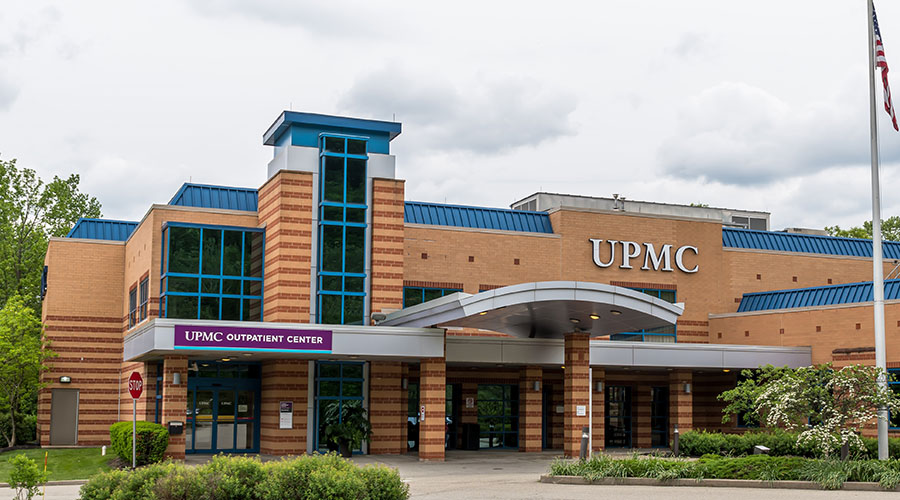UPMC Uses AI and Data to Improve Facilities
UPMC uses data analytics and AI to generate greater efficiency, healthier indoor environments and bottom-line benefits.
For more than a decade, building owners and facilities executives have discussed Big Data in institutional and commercial facilities — where to find data, how to gather it and what to do once it has been gathered. And many facilities have made progress toward these goals. But the holy grail of the process — turning facilities data analytics into tangible benefits for the organization and its bottom line — often has been elusive.
The University of Pittsburgh Medical Center (UPMC) facilities team has been developing a framework for embedding cutting-edge technologies into the maintenance management process. UPMC has continued to pursue that goal — and succeeded. Spearheading UPMC’s efforts to turn facilities data into bottom-line benefits is Michelle Kirk, senior regional director of facilities engineering and maintenance. Their efforts so far have more than paid off.
In December 2024, UPMC implemented a monitored-based commissioning (MBCx) initiative.
“The phase one potential savings were about $800,000, and we have exceeded that already,” Kirk says. “It’s over $1 million today, and it’s only been six months. We’re anticipating this is going to be an even larger opportunity.”
Building the system
The opportunity to use facility data to improve the condition and performance of UPMC’s buildings became apparent to Kirk during the interview process for her current position as she discussed the organization’s facilities performance goals with the executive leadership team. As she toured the command center and the organization’s logistics operation center — the dispatch center for maintenance issues for all UPMC buildings — she realized the framework already was in place.
“At that time, I saw an opportunity to enhance the command center and logistics operation center by utilizing the technology that we have in the facilities today,” Kirk said. “Due to my experience and my exposure as a (Joint Commission) surveyor, I recognized all the available technology that we as a facility could lean into.”
Kirk says the team understood that using data to bring greater efficiency to maintenance and operations would help UPMC contend with forces at work in healthcare.
“In the healthcare environment, facilities departments normally experience budget cuts in addition to being tasked with doing more with less resources,” she says. “The model facilities business nationwide is trending toward shared resources across all facilities. There is strength in numbers, and we as facilities will need to work together as one to move forward, be nimble, and adapt.”
So far, the MBCx program has gathered data from building automation systems (BAS) in 10 of UPMC’s facilities, analyzed it to determine where technicians needed to focus their attention and, ultimately, deliver greater efficiency, effectiveness and financial benefits.
“All the different building automation control (BAC) systems are compiled into one single platform under fault detection diagnostics,” Kirk says, adding she anticipates adding UPMC’s remaining facilities by 2027. “Then we used the system to pull all the BACs points, control sequences, mechanical schedules and much more to create a one digital source of truth for one piece of equipment. In healthcare, we would call this the patient’s medical record.”
Once the data has been pulled into the system, artificial intelligence (AI) comes into play, Kirk says. UPMC’s nationwide community set of facility engineering algorithms diagnoses the equipment and identifies critical maintenance tasks designed to pull the equipment into optimum performance. For example, the process of maintaining proper temperature and humidity levels in surgical areas has evolved from past practices.
“In the past, facilities relied on an alarm parameter and would react when (the readings were) out of range,” she says. “With the system that we have now, we are actually looking at the whole thing as a single snapshot.”
Kirk says the entire process relies on being able to gather as much data as possible from an array of systems and platforms.
“The building automation systems are not able to talk to each other, so this system will be able to pull in all the building automation systems regardless of what platform they have.”
An even more basic pillar of the UPMC’s fault detection and diagnosis system — beyond gathering data — is being able to identify essential systems and equipment in each facility that generates the data.
“One of the biggest challenges is properly identifying assets,” Kirk says. “When you don’t know what you have, how do you take care of it?”
Kirk compares the data gathering process in facilities to healthcare system operations.
While UPMC’s efforts to bring efficiency to maintenance, healthier environments to patients and financial benefits to the organization tap into new technology, such as AI, the process is not new.
“The only thing that is new to UPMC is the fault detection and diagnostic platform,” Kirk says. “This is already well known across the country, and it’s actually being practiced by a lot of third-party facility management (providers). They too have to do the behind-the-scenes work and share services, meaning that they have one leader who oversees multiple locations. How do you handle those multiple locations? You have to have the technology to leverage and manage it on a day-to-day basis.”
Buy-in and benefits
While securing buy-in for facilities investments from an organization’s financial executives is never easy, Kirk says the facilities team’s initial presentation to UPMC’s executives on the benefits of gathering, analyzing and acting on facilities came relatively quickly.
“We pretty much did it with a single presentation,” she says. “We showed them the demo of (the fault detection and diagnostic software), and when they saw the potential savings, they were definitely interested.
“At the end of this, with all UPMC hospital campuses in this system, we feel we’re going to be able to reduce our energy costs by $14-18 million a year. With just a fraction of buildings live online with analytics, we already are showing a savings of $2 million in the first six months.”
The benefits of Kirk’s data analytics efforts for UPMC go beyond the bottom line, she says. Among them are these:
- achieving alignment with high-reliability organizations supporting high-quality and complex systems
- promoting transparency, understanding and decision making for the status of equipment and to better equip the department to respond based on data
- guiding facilities teams toward failure mode and effects analysis
- guarding resources better and being competitive as a leading healthcare facilities organization.
The benefits for UPMC also extend to the next generation of front-line technicians.
“This platform is part of the AI, and this is the future,” she says. “This (software) actually allows those that did not get a chance to go to college to get their basic training. Once they have a live experience in the facility, it teaches them to see what those (components) are and how to troubleshoot them. The best thing about this is to streamline the efficiency of our team on site so that they don't have to think about it.”
Given that Kirk has spent her career working in a healthcare environment, it is not surprising that she often compares her efforts to understand as much as possible about her organization’s in-place assets to the efforts of medical professionals who treat patients in UPMC’s facilities.
“I see our assets as our patients,” she says. “A building is like a human body. The structure is the bone, and everything else, from the heart to the brain to the veins, all those are part of the system operations.”
Kirk says she uses the same strategy when discussing her data analytics efforts with the organization’s leadership.
“While the clinical people are taking care of their patients, we have to take care of our patients, too.”
Related Topics:












